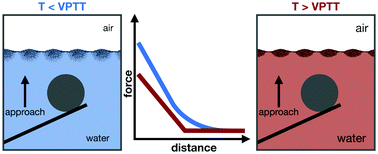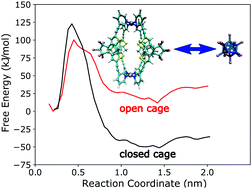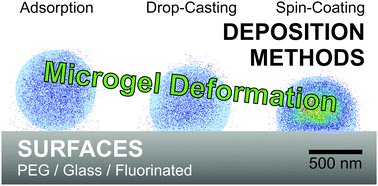Themed collection Bunsentagung 2021: Multi-Scale Modelling & Physical Chemistry of Colloids

Interactions between a responsive microgel monolayer and a rigid colloid: from soft to hard interfaces
We investigated the interaction between microgel monolayers at the air–water interface and a hard colloid in water. Our results show that microgel monolayers change from soft to hard repulsive interfaces when the VPTT is exceeded.

Phys. Chem. Chem. Phys., 2021,23, 16754-16766
https://doi.org/10.1039/D1CP01703A
A coarse-grained xDLVO model for colloidal protein–protein interactions
Shape-based coarse graining of proteins permits anisotropic intermolecular interactions modulating protein solubility. Together with the ion–protein dispersion, it allows the calculation of the B22 coefficients without experimental fitting.

Phys. Chem. Chem. Phys., 2021,23, 12780-12794
https://doi.org/10.1039/D1CP01573G
Influence of Mg-doping on the characteristics of ZnO photoanodes in dye-sensitized solar cells
The bandgap of ZnO nanoparticulate photoanodes was increased by Mg-doping and the impact on photoelectrochemical characteristics in dye-sensitized solar cells is discussed.

Phys. Chem. Chem. Phys., 2021,23, 8393-8402
https://doi.org/10.1039/D1CP00179E
Thermodynamic driving forces of guest confinement in a photoswitchable cage
Photoswitching the dithienylethene ligands in a palladium(II)-based coordination cage modulates the free energy of guest binding.

Phys. Chem. Chem. Phys., 2021,23, 7321-7332
https://doi.org/10.1039/D0CP06495E
Protein flexibility reduces solvent-mediated friction barriers of ligand binding to a hydrophobic surface patch
Collective protein-water motion modulates friction for ligands approaching a binding interface.

Phys. Chem. Chem. Phys., 2021,23, 5665-5672
https://doi.org/10.1039/D1CP00181G
Controlling microgel deformation via deposition method and surface functionalization of solid supports
The deformation of microgels deposited onto different substrates applying the three most common methods (spin-coating, drop-casting, and adsorption) was investigated by super-resolution fluorescence microscopy and molecular dynamics simulations.

Phys. Chem. Chem. Phys., 2021,23, 4927-4934
https://doi.org/10.1039/D0CP06355J
About this collection
Physical Chemistry Chemical Physics (PCCP) is proud to publish the official themed issue of the annual Bunsentagung meeting celebrating both the 99th anniversary of the Colloid Society and the 120th General Assembly of the Bunsen Society, organised by the Deutsche Bunsen-Gesellschaft, this year held virtually on May 13 - 15, 2021.
The Bunsentagung 2021 conference focuses on the following two main topics – colloidal science and multi-scale modelling. Colloidal Science studies matter that is structured on the nanometer scale. It is the realm where polymers and membranes form their shape, where aggregates of amphiphilic molecules form, and where particles coagulate. Forces on different length scales drive colloidal behavior: the atomistic structure gives rise to attractive and repulsive forces. These interactions determine structure on a larger scale and drive colloidal processes. Multi-scale modelling methods are inspired by this interplay of different length scales and combine simulations with atomistic and coarse-grained resolutions. They can reveal structure property relationships on different time and length scales and allow to follow the development of structures and the emergence of function. Parallel sessions will be held to present most recent results from all other fields of physical chemistry – from catalysis to thermodynamics, from gas phase to solid state, from electrochemical studies to time-resolved spectroscopy.
The aim of the Bunsentagung and the devoted PCCP themed collection is to highlight the progress in the wide scope of subjects from fundamental to applied physical chemistry.
Guest Edited by: Patrick Nürnberger (University of Regensburg), Bernhard Dick (University of Regensburg), Werner Kunz (University of Regensburg), Dominik Horinek (University of Regensburg), Michael Gradzielski (Technical University of Berlin) and Kurt Kremer (Max Planck Institute for Polymer Research).